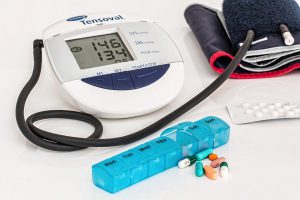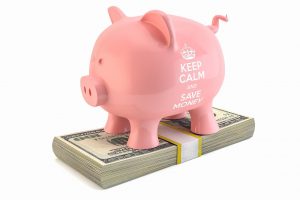So you’re sitting on a little nest egg, huh? You’ve got some money put aside – good for you! But what are you telling yourself you’re going to use it for? If you’re like a lot of people, that money is earmarked for a “rainy day”: you’re trying to expect the unexpected, and outsmart that unfortunate law of the universe that says that if something can go wrong, it will. So you’ve been saving a little when you can in case of a medical emergency, a necessary car repair, or even a literal rainy day that results in a basement flood.
And all of that is very responsible, but you know what? There’s more to life than rainy days, and shelling out your hard-earned money on the bad things in life. So maybe it’s time to start a “sunny day fund,” and plan for the things in life you want to do, without going into debt.
What’s Your Sunny Day?
While having an emergency fund and a rainy day fund is really important for those “life happens” kind of things, having a sunny day savings fund can help you make the good stuff in life happen. So what kind of things might you want to build your sunny day fund for?
- A fabulous vacation – Did you know that the average cost of a vacation for a family of four is around $4,600? That’s well over $1,000 per person, and that’s a whole lot of money to put on your credit card! Not to mention, the interest you’d be racking up while paying off the debt from your trip. Using money from a dedicated sunny day fund will save you from going into debt in order to visit your dream destination.
- Time off of work – Around 54% of Americans are living paycheck-to-paycheck, and many more don’t have the funds to ever take time off from the daily grind. Being in this situation, with no hope of taking breaks from work, can wear you down, but having a sunny day fund could allow you to take a little sabbatical or even mini-retirement somewhere down the road. Having money in the bank could also mean the flexibility to leave a job that you don’t love, and pursue your passion.
- An “unnecessary” renovation project – Sure, you have to fix that leaky pipe or roof, get the dishwasher repaired, etc, etc, but all of those necessities can be taken care of by your rainy day fund. Your sunny day fund can be used for something more “fun,” that will improve your quality of life, like an outdoor kitchen, or a new jacuzzi bathtub.
- Splurging – Do you find it difficult to treat yourself with your hard-earned money? We get it: you’ve been told to put any extra money aside, and try to forgo all of those impulse buys. But here’s the thing: financial experts actually warn against completely depriving yourself, because that could actually lead to you sabotaging your financial goals – kind of like dieting! So yes, put that extra money aside, but put it in your sunny day fund, and then use it for something – anything – that you really want. And creating a sunny day fund for splurges will do double duty: you’ll have money that will allow you to treat yourself without going into debt, AND you’ll put the brakes on impulse buying. Why? Because you’ll have to save up, which will slow down your purchases and give you time to decide if what you thought you wanted to splurge on is what you really want to spend that sunny money on.
How to Start Your Sunny Day Fund
Hopefully the ideas above got your mind working, and got you itching to start putting some sunny day money aside (or maybe you already knew exactly what you’d spend some extra cash on)! So how do you get started? It’s actually easier than you might think, you just need a plan. Here are some steps you should be following to get you to your goals:
1. Make sure you have a rainy day fund first
Your sunny day fund should not take the place of your rainy day fund – these should be separate. And it’s super important that, before you start splurging, you know you have money to cover both emergencies and unexpected necessities. In fact, financial experts suggest that you have both an “emergency fund” of around $1,000, if possible, and at least 3-6 months of living expenses in case of a more major life event.
The unfortunate fact, though, is that around 46% of households don’t have adequate rainy day funds. So how can you get this money socked away, before you start your sunny day fund? Most experts recommend following the 50/30/20 rule, which means that 50% of your paycheck should go towards necessities, 30% can go toward discretionary spending, and a full 20% should go into savings, some of which can go toward the future, and some of which can go into an emergency fund. If you’re still having trouble figuring out how to balance debt and savings, check out our look at building debt and wealth snowballs here!
2. Figure out your goal amount

Aimlessly daydreaming about tooling around on your boat, taking that dream vacation overseas, or even changing careers is fun, but if you’re really serious about making those things happen, you need to know how much they cost. Knowing at least a ballpark figure will really help you to start saving for your goal. Calculate, for example, a rough figure for airfare, hotel, food, and tourist attractions, or the cost of a boat plus storage, or how much money you’d need to take time off and get a new degree or get a business up and running. Knowing this will also keep you on track and stop impulse splurging: as you watch your sunny day fund grow, you’ll know you’re getting close to that big number that means a wish fulfilled!
3. Break your goals down into smaller goals
Maybe that “big number” will seem a little overwhelming, so try a little psychological trick on yourself. Instead of keeping the number, say, $2,000 in your head, break that goal amount down into smaller goals. For example, if you’d like to have $2,000 in your sunny day fund in six months, look at it this way: divide $2,000 by 6 and you get $333. That means you only have to save $333 a month, or broken down even further, $83 a week (333 divided by 4 weeks in a month) to get to your goal! Sounds much more doable, right?
4. Gamify your saving
Everything’s easier when it’s fun, right? So try and make saving for your goals into a game: try a challenge to keep you on track, like the $5 bill challenge, in which you save every $5 you get, or the weather savings challenge, where you save the number of dollars that corresponds to how high the temperature was that day. There are a number of challenges you can try, so find one that seems fun to you – and maybe challenge a friend to join you, so you can keep each other on track.
5. Try a side hustle
If you’ve got a little extra time, and you really want to jumpstart your sunny day savings, you can take on a side hustle. There are tons of ways to make extra cash these days, with as little or as much commitment, time or otherwise, as you’d like. You can do anything as casual as food delivery or ride-share driving to things that require more skill and time, like writing, proofreading, or graphic design. Check out our handy guide to side hustles here.
6. Pay cash
Finally, try not to touch that sunny day money until you’ve reached your goals. And when you are ready to start spending on the things that you want, use the money you’ve saved, and pay for things in cash. No debt, no stress – just the feeling of freedom that comes from knowing the things you’re buying are already paid for.
We know that splurging is not within everyone’s reach, but we also know that that can start to feel pretty depressing. And that feeling that you’ll never reach big goals can actually lead to impulse splurging that keeps you from saving – and the cycle continues. So, if you’ve got the ability to do it, try creating a sunny day fund for yourself, even if it’s a small one at first. Saving for something that will bring a little joy into your life might actually be the way to get more organized when it comes to your finances, and keep you on top of your budget. And remember: life shouldn’t be only about necessities and fixing the things that go wrong, so we hope that you can fit a little fun into your budget. Don’t forget to tell us what YOUR sunny day goal is!



